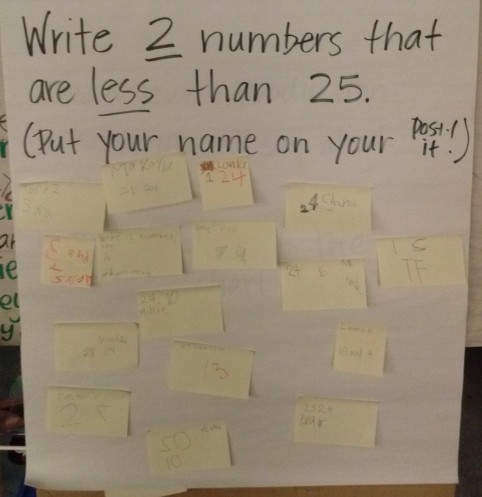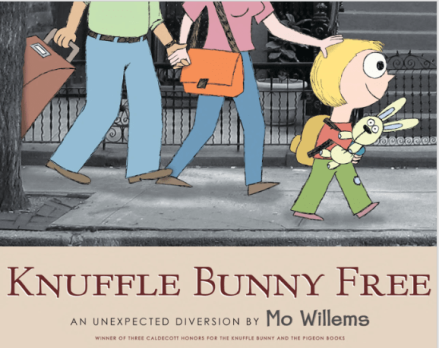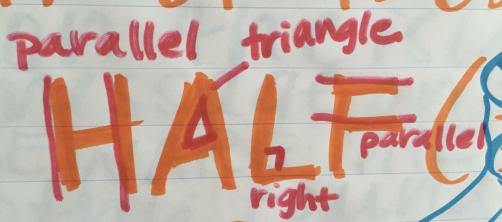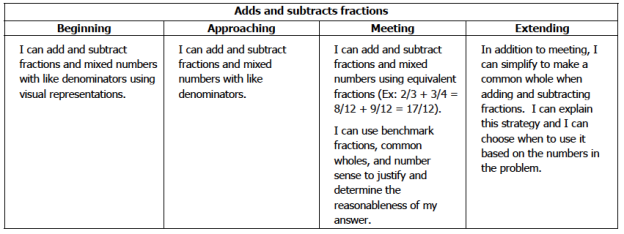For years in 5th grade I posted about Math Warm-Ups and how we used them to get our brains ready for flexible math thinking every morning. Last year I didn’t use them much–for one reason or another–and this year they didn’t make sense until just recently. So here we go–join us to see how Math Warm-Ups work with young mathematicians and how we use them to stretch our brains!
Week of December 12-1 to 12-5
Monday
Wait–Monday we didn’t have a Math Warm-Up. Partly because it was the first day after a really long weekend and also because we had some unexpected freezing rain during the morning rush and it took me 2 1/2 hours to get to school that day! I did anything but rush to school. Here’s a picture of how fast we were going at one point. And believe me, I was being really safe while I took this pic:

See that? I think it says 2 miles an hour. On the highway. Seriously.
Tuesday
This was the first day of Math Warm-Ups so I asked a question that I knew everyone could answer easily, as the point was to teach the purpose and procedure more than focus on a math concept. Still, we were able to pull in many things we’d been working on in math during our conversation about this warm-up.

Now that I look at that picture, I wish I would have taken one right after we put all the post-its on it, because it was much messier, and that’s actually part of the conversation we had about what we could do with the data we had collected: someone suggested that it needed to be more organized. I also asked them what question we could answer with the information we had up on the easel. There were several good ideas, one of which was “Do we have more 6YOs or 7YOs in our class?,” hence why we ended up with two columns of notes.


It was great to watch and listen when we started to analyze the notes and figure out how many of each age there were: they used what we’ve been learning about grouping objects to count, and recognized that I put them into the same shape as the 10 frames we’ve been looking at lately. They were similar to what our math racks look like, too, and they quickly and easily saw that there were 7 6YOs on this day and 10 7YOs. We talked about other questions we could answer, and also talked briefly about how this data could change based on the day (we had 3 friends absent).
Wednesday

Another one I knew most could answer easily, but a little harder than yesterday. The focus today was on making sure we followed all the directions of the warm-up: answering the WHOLE question and putting our name on our post-it. There were still some who did not, so we made sure to talk about that when we reviewed this question during math. The words LESS and GREATER were also a focus, as was writing the number the way it should actually look–with digits in the right places AND going the right direction (which is still tricky for some friends at this point in 1st grade!).
Thursday

We’ve been working on flexibility with combinations up to 20, as well as most recently practicing doubles and doubles +1. This was interesting, then when most kids put 10+9 as their answer (which is probably the easiest combination to figure out). I noticed many who wrote combos that DIDN’T equal 19, so the conversation was around accuracy as well as how they figured out their answer. It also told me that as a whole, we need some more practice on this skill!
Friday

This question was just one to see where we were with fractions, as we’re about to finish up that unit. The benchmark is just that kids understand 1/2s and 1/4s, but the “extending” on our rubric is 1/3s and I was pretty sure most kids could tackle that as well. And boy was I right! Now…I am not entirely sure if kiddos answered these on their own (like they’re supposed to) or if they worked together, so there’s more work to be done, but for the most part you can see that most of those rectangles (which is also part of this unit) are divided into 3 equal pieces! Even the way I worded the question gave me some information–info that I didn’t expect–when someone said, “I can’t just draw 1 line and make thirds. Can I draw more than 1?” Obviously that friend knew what was going on! I hadn’t done that on purpose, and so made the change on the chart for the rest of the friends who completed it.
This is our first try with warm-ups this year and I am excited to see where they go! Great job, Rm. 202 friends! You did an AWESOME job!
Teachers–What kinds of math warm-ups have you done with your class? Have you tried them with 1st graders? How did it go? We’d love to hear about what’s going on in your class! Parents–did you hear about Math Warm-Ups from your kiddo? What were they saying? 🙂





































































